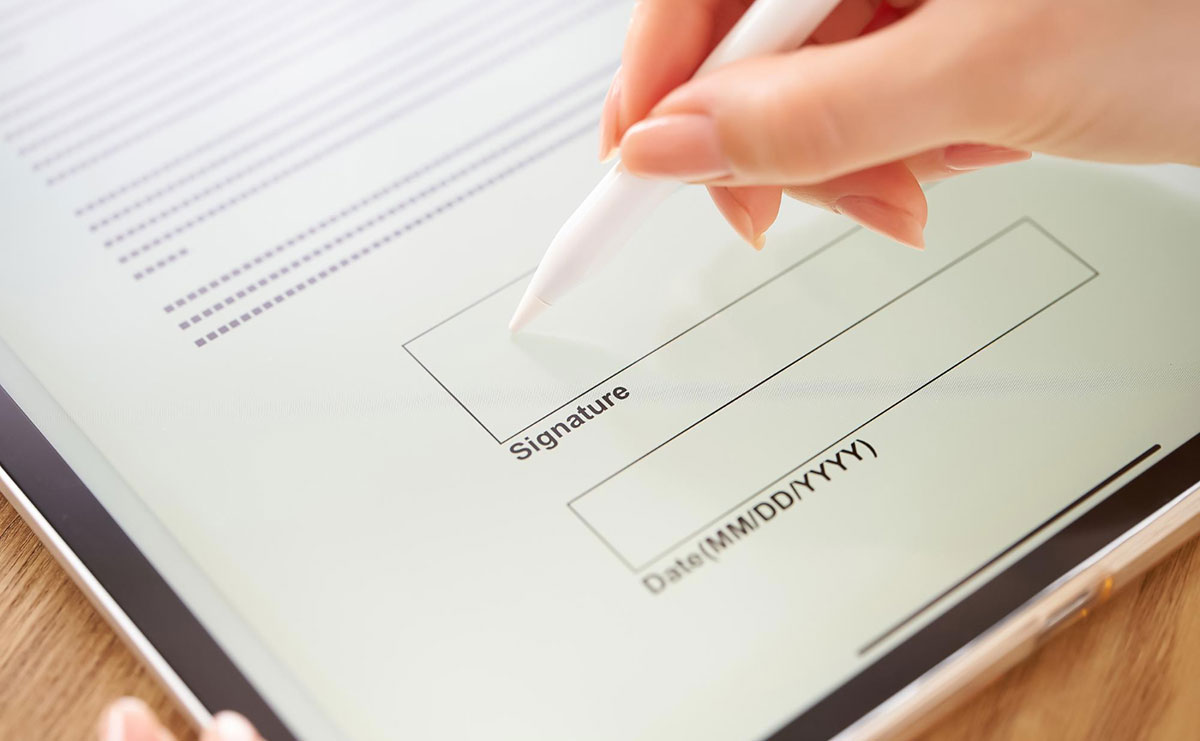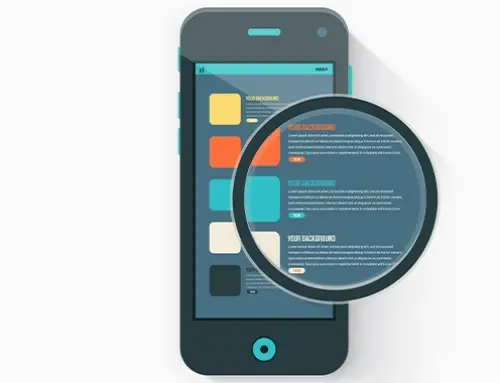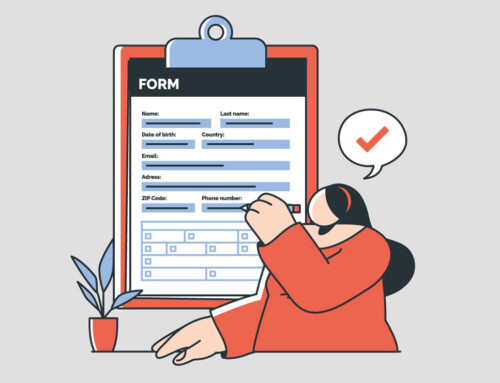Contents
Release Form: A Quick Guide
In the digital age, navigating the use of multimedia assets without infringing on rights is challenging. Release forms, crucial in various fields, ensure consent for using someone’s likeness, avoiding legal issues and reputation damage.
Understanding and correctly using these forms is essential for anyone in creative, journalistic, or research roles.
What are Release Forms?
Release forms serve as a crucial legal agreement, securing consent for the use of an individual’s image, likeness, or property.
These forms not only evidence agreement but also shield both the user and the subject from possible legal conflicts, ensuring a mutual safeguard against potential disputes.
What is a Release Form Used For?
Release forms are pivotal across various domains, ensuring mutual agreement on the use of personal likenesses, properties, or presence at events. In photography and video production, they secure consent from models or actors, delineating shoot terms and compensations, often mandated by law for commercial use.
At events like concerts or sports, these forms permit the recording of attendees, clarifying the intent and possible compensations, thus safeguarding against legal disputes over commercial use. Similarly, for property use in projects or promotions, release forms detail the agreement terms, including compensation, preventing legal issues with property owners.
These forms play a critical role in protecting rights and clarifying terms, essential in maintaining transparency and consent in creative and commercial endeavors.
Types of Release Forms
There are different types of release forms. By understanding these forms, lawyers and law firms can better guide their clients through the intricacies of legal agreements, reinforcing the importance of informed consent in commercial and personal activities.
General Release Form
A General Release Form is a broad-spectrum agreement that encompasses the relinquishment of all conceivable claims against another party, related to a specified event or activity. It’s a blanket form that aims to prevent future legal disputes by ensuring all parties are on the same page regarding the potential risks and liabilities involved.
Model Release Form
The Model Release Form is indispensable in commercial photography and videography. It grants creators the right to use an individual’s likeness for commercial purposes, protecting against privacy or image rights violations. This form is a staple in ensuring that the use of someone’s image aligns with legal standards and personal consent.
Property Release Form
Similar to the model release, a Property Release Form is necessary when the images or footage of a specific property are to be used commercially. This document is essential for real estate photographers and filmmakers, clarifying the permissions granted by the property owner or representative.
Location Release Form
For photography or filming that takes place in unique locations, the Location Release Form secures permission to use images or footage of the site for commercial purposes. This form is crucial for outdoor and landscape projects, ensuring that the use of the location’s imagery complies with legal requirements.
Talent Release Form
In the entertainment industry, a Talent Release Form is used to obtain consent from individuals for the use of their performance, voice, or likeness in productions. This document outlines compensation, credit, and publicity clauses, safeguarding both the production entity’s and the talent’s rights.
Video and Photography Release Forms
Video Release Forms and Photography Release Forms are specialized agreements that permit the use of video footage or photographs of individuals for specific purposes. Whether for documentaries, promotional materials, or social media campaigns, these forms ensure that the subjects’ likenesses are used appropriately and with consent.
Media Release Form
The Media Release Form allows for the use of an individual’s name, image, and personal information across various media platforms. It’s a critical tool in journalism, advertising, and public relations to secure explicit consent for the portrayal of individuals in the public eye.
Minor Release Form
A Minor Release Form is vital in scenarios involving the use of a minor’s image or likeness, requiring consent from a parent or legal guardian. This form is particularly relevant in commercial photography and videography, safeguarding the rights and privacy of minors.
Interview, Video Production, and Music Release Forms
These forms cater to specific needs—Interview Release Forms for the use of testimonials in media, Video Production Forms for consent in video projects, and Music Release Forms for the utilization of musical compositions in various productions. Each ensures that creators have the necessary permissions to proceed with their work without legal hindrances.
Material, Health, and Liability Release Forms
Material Release Forms grant permission to use copyrighted material, Health Release Forms allow the sharing of health information with specified parties, and Liability Release Forms release an entity from liability in risky activities. These documents are tailored to specific contexts, providing essential legal protections in their respective fields.
Release forms are indispensable tools in the legal toolkit, offering protection and clarity for both parties involved in a wide array of activities. Understanding the nuances of each type is crucial for lawyers and law firms in advising their clients accurately.
As the legal landscape continues to evolve, staying informed about these forms ensures that all engagements are conducted within the bounds of the law, safeguarding personal and organizational interests.
For law firms looking to streamline their legal documentation processes, incorporating legal case management software like RunSensible can significantly enhance efficiency and accuracy. By embracing technology, lawyers can ensure that all necessary release forms are properly managed, accessible, and in compliance with current legal standards.
How Do You Write a Release Form?
Creating a release form is a critical process in various industries, particularly in contexts where legal agreements are necessary to grant permissions or waive certain rights. Such documents are pivotal in photography, videography, events, and other commercial activities, requiring clear, specific terms to protect all parties involved.
This guide outlines the fundamental steps to craft an effective release form, ensuring it is legally sound and comprehensively covers the necessary aspects of the agreement.
Identifying the Parties Involved
The foundation of a robust release form begins with the clear identification of all parties involved. This includes the releaser (the party granting permission or releasing claims) and the releasee (the party being granted permission or immunity from claims). Proper identification involves full legal names, addresses, and possibly other identifying information to prevent any ambiguity about who the agreement covers.
Describing the Activity or Event
Detailing the activity or event is crucial for specificity. This part should describe the nature of the event or activity, such as a photo shoot, video production, or performance, in clear and unambiguous terms. This specificity ensures that the release is applicable only to the mentioned circumstances, providing clarity and limiting the scope of the agreement to the intended context.
Stating the Terms of the Release
The terms of the release are the core of the document, outlining exactly what rights are being granted or what claims are being waived. This could range from liability for injuries to copyright claims on photographs or videos produced during the event. It’s important to articulate these terms clearly, ensuring all parties understand the extent of the permissions granted and any rights they are waiving.
Including a Timeframe
Incorporating a timeframe specifies the duration for which the release is valid. This could be the specific dates and times of an event or a broader period during which the released materials may be used. Defining this timeframe helps in setting clear boundaries for the agreement’s applicability, providing a temporal context that further clarifies the agreement’s scope.
Sign Release Form and Date
To be legally binding, the releaser must sign release form and date it. This act signifies agreement to the terms outlined in the document. The date of signing is equally important, as it indicates when the agreement becomes effective. Ensuring that this signature occurs in the presence of a witness can add an additional layer of legal validation.
Witness Signature
Incorporating a witness signature is a best practice that lends additional credibility to the document. The witness, by signing, attests that the releaser signed the document voluntarily and with an understanding of its contents. The witness’s printed name, contact information, address, and phone number should also be included, providing a way to verify the authenticity of the signature if ever needed.
Writing a release form with precision and clarity is paramount to its effectiveness in protecting the interests of all parties involved.
Most Important Terms in a Release Form
Release forms are essential legal documents used across numerous sectors, from entertainment and media to sports and healthcare. They protect both the releasee (the party being released from liability) and the releaser (the party agreeing to waive certain claims).
Understanding the key terms in these forms is crucial for lawyers and law firms to effectively draft and review these documents, ensuring their client’s rights are protected while minimizing potential legal disputes. This post will explore the most critical terms found in release forms, providing clarity on their meanings and implications.
Releasee and Releaser
Releasee refers to the individual or entity that is being released from liability or claims. It’s important to accurately identify the releasee, including their full legal name and any other relevant details, to avoid any ambiguities.
Releaser, on the other hand, is the party releasing the claims or liability against the releasee. Like the releasee, the releaser must be clearly identified by name and described in detail to ensure the agreement’s enforceability.
Consideration
Consideration is a fundamental concept in contract law that refers to something of value exchanged between the parties. In the context of a release form, consideration might include monetary compensation, services, or other benefits provided to the releaser. This element validates the contract, making it legally binding.
Indemnification
Indemnification clauses serve as a safety net for the releasee, ensuring they are not held liable for future claims or lawsuits related to the activity or event in question. It’s a promise by the releaser to cover any legal costs or damages that the releasee might incur due to the covered activities.
Jurisdiction
Jurisdiction determines the legal venue where disputes related to the agreement will be resolved. Specifying jurisdiction is crucial for providing both parties with a clear understanding of where legal actions must be taken, should disputes arise.
Waiver
A waiver is the relinquishment of a legal right or claim. In release forms, waivers are used to explicitly state that the releaser gives up any future claims against the releasee related to the activity or event.
Assumption of Risk
Assumption of Risk involves the releaser acknowledging and accepting the potential risks associated with the event or activity. This acknowledgment is crucial in activities where there is an inherent risk of injury or damage.
Confidentiality
Confidentiality clauses protect sensitive information from being disclosed. In release forms, these clauses might restrict the releaser from sharing proprietary information or trade secrets of the releasee.
Consent to Use Image or Likeness
This term ensures that the releaser explicitly agrees to the use of their image or likeness, outlining the scope and manner in which it can be used. It’s particularly relevant in media and advertising, where personal images or videos are used commercially.
Rights Granted and Limitations on Use
Rights Granted specify what permissions the releasee has concerning the releaser’s property or likeness. Limitations on Use further define these permissions, setting boundaries on how the granted rights can be exercised.
Severability
Severability ensures that if one part of the release form is found to be unenforceable, the remainder of the document remains valid. This clause helps preserve the integrity of the agreement as much as possible.
Governing Law
Governing Law identifies the specific legal jurisdiction that governs the release form. It dictates which laws and regulations apply, providing a framework for interpreting the agreement.
The terms outlined in a release form are vital for protecting the interests of all parties involved. Lawyers and law firms must understand and carefully consider these terms when drafting or reviewing release forms to ensure their clients are adequately protected.

Who Needs a Release Form?
Release forms are fundamental legal documents that serve as protective measures in various contexts, safeguarding the interests of individuals and organizations alike. These forms are critical in activities involving the use of personal information, property, or participation in potentially risky activities.
Understanding who requires a release form can help lawyers and law firms ensure their clients are adequately protected against future liabilities and claims. This blog post will explore the different scenarios and stakeholders for whom a release form is essential.
Photographers and Videographers
Professionals in photography and videography often require subjects to sign a Model Release Form. This form is necessary when images or footage will be used commercially, ensuring that the subject consents to the use of their likeness.
Event Organizers
Event organizers frequently use Liability Release Forms for participants in events that might pose a risk of injury. These forms ensure that participants acknowledge and accept the risks associated with the event, releasing the organizers from liability.
Businesses and Corporations
Businesses engaging in marketing or advertising campaigns that feature individuals’ images or testimonials need Media Release Forms. This ensures they have the legal right to use such material without violating privacy rights.
Sports Clubs and Recreational Facilities
Sports clubs and recreational facilities require members or participants to sign Liability Release Forms. These forms are crucial for activities that involve physical exertion and inherent risks, protecting the facility from claims related to injuries.
Healthcare Providers
Health Release Forms are used by healthcare providers to share patient information with other healthcare professionals or insurance companies, in compliance with privacy laws. Patients must consent to the release of their health information.
Real Estate Professionals
Real estate professionals utilize Property Release Forms when photographing private properties for commercial use, such as in listings or promotional materials. This ensures that the property owner agrees to the use of the property’s image.
Schools and Educational Institutions
Schools and educational institutions often require Minor Release Forms for activities involving minors, ensuring that parents or guardians consent to their children’s participation and the use of their images in school-related publications.
Media and Entertainment Industry
The media and entertainment industry heavily relies on various release forms, including Talent Release Forms, Music Release Forms, and Material Release Forms, to use individuals’ performances, copyrighted music, and other materials in productions legally.
Research Institutions
Research institutions may require Interview Release Forms when conducting studies involving participants’ testimonials or opinions, ensuring the participants consent to the use of their responses in the research.
Conclusion
In conclusion, these are critical legal tools used in various industries to protect the rights and interests of all parties involved in using creative materials.
From photography and video production to events and property usage, these ensure that individuals and organizations obtain written consent for using images, likenesses, and property. When writing a form, it is important to include the most important terms, such as consent to use the material, limitations on use, compensation, and a waiver of liability.
Anyone intending to use someone else’s image, likeness, or property in a specific context should obtain it; in some cases, they are required by law. While the language and legal requirements can vary greatly depending on the jurisdiction and industry, their importance in protecting against legal disputes and ethical concerns remains constant.
As such, it is essential that individuals and organizations carefully review and tailor these forms to their specific needs, ensuring that they are using creative materials responsibly and ethically. In today’s rapidly evolving legal landscape, these are a vital component of modern legal practice and are essential for protecting the rights and interests of all parties involved in using creative materials.
Disclaimer: The content provided on this blog is for informational purposes only and does not constitute legal, financial, or professional advice.







